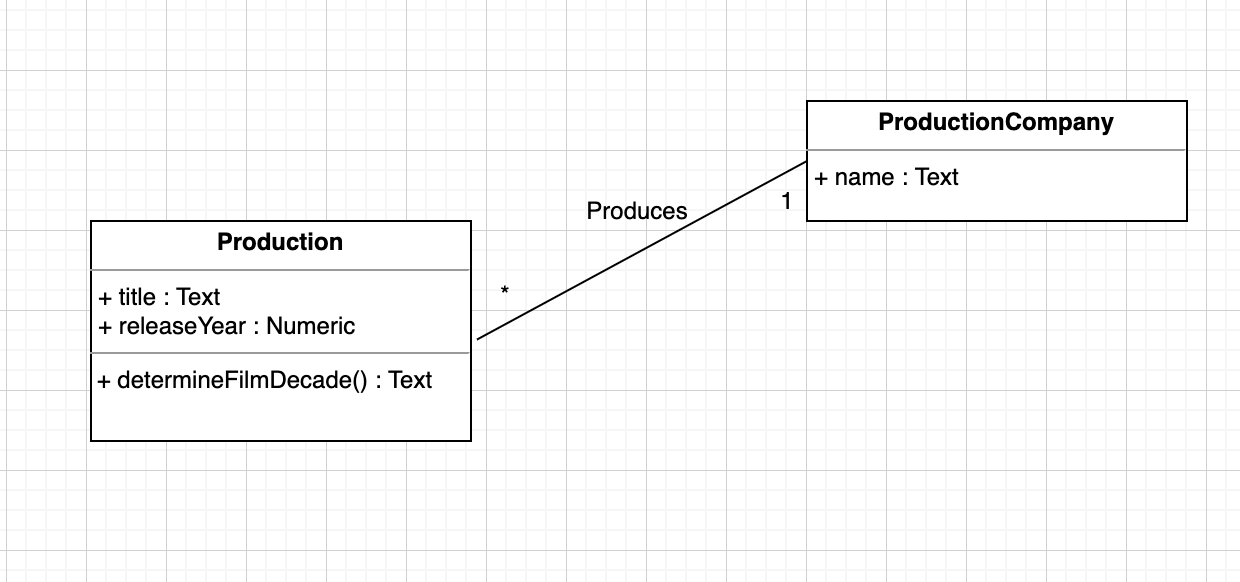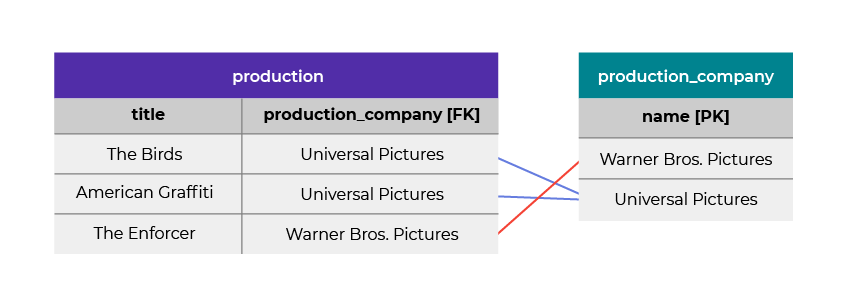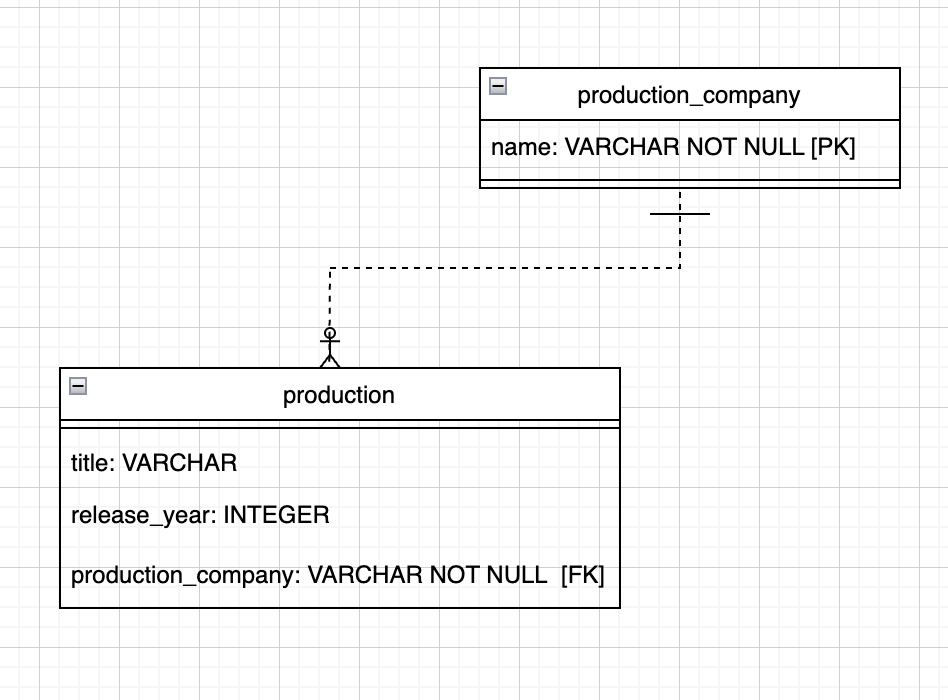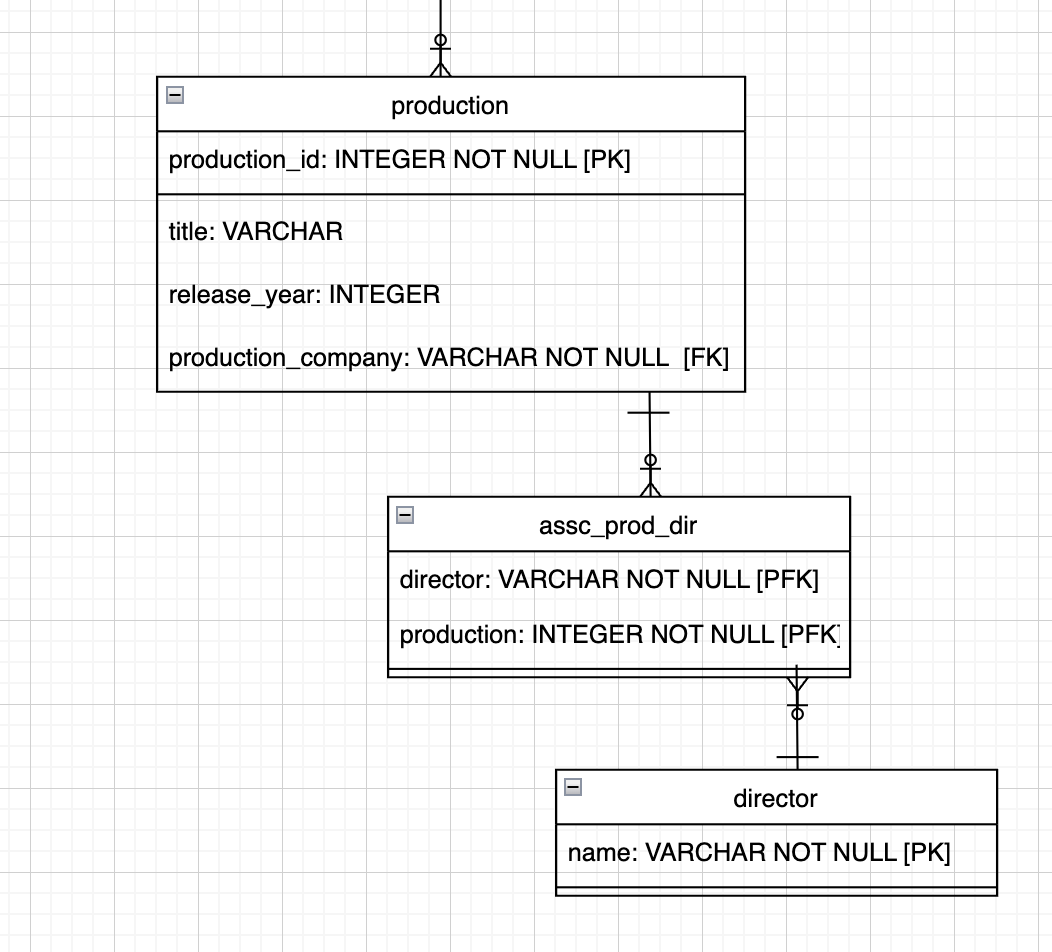Here's the good news. Now that you understand primary and foreign keys, you have everything you need to translate your UML diagram into a relational model.
As you’ll see, this translation process is automatic. You just need to apply certain rules, and it's done.
One-to-Many Association
Take your UML diagram and look at the association between production and ProductionCompany .
This association is one-to-many. Of course, it’s also a composition. But composition is a specific type of one-to-many association. For now, forget about the composition part and concentrate on the one-to-many aspect:

Because a production company produces many productions, you need to add a foreign key to production that refers back to the production_company primary key.


Since the production – production_company association is a composition, it follows the above rule. There is an additional feature, but you’ll learn more about that later.
Many-to-Many Association
Let’s look at the production – director association, a many-to-many association.
If you try to put a foreign key in production that refers back to the primary key in director , you’ll see that one production can only have one director. You don’t want this. If you put a foreign key in director instead, you will then only have one production for each director.
For a better illustration of this problem, watch this excellent Openclassrooms video.
We need to find another solution.

Here, you can see that a production can have several directors, and a director can direct several productions.

One-to-One Association

But isn't this the same as for the one-to-many association?
Yes, but with an added detail. According to the diagram above, a movie theater can only have one address, but two movie theaters could have the same address. You don’t want this.
If you want to specify that one cinema can only occupy one address, you need to add a uniqueness constraint to the address attribute. So, the address column couldn’t have the same value twice. This means that address cannot hold the same reference to a given address twice. In other words, one address can only be linked to one cinema.
Let’s Recap!
A one-to-many association means adding a foreign key to the table at the “many” end of the link. This foreign key refers back to the table’s primary key at the “one” end.
A many-to-many association means adding a new table. The primary key of this new table will consist of the two foreign keys of the tables linked together.
Also, use a foreign key for a one-to-one association between table
Aand tableB. The foreign key is held inAand references the primary key inB.
We’ve completed the first step in translating your UML diagram into a relational model. Well done! You’ve transformed the associations from your UML class diagram. In the next chapter, let’s see how to transform your compositions and association classes.
